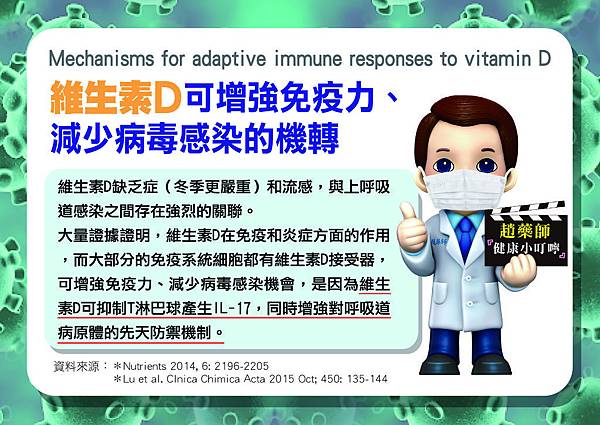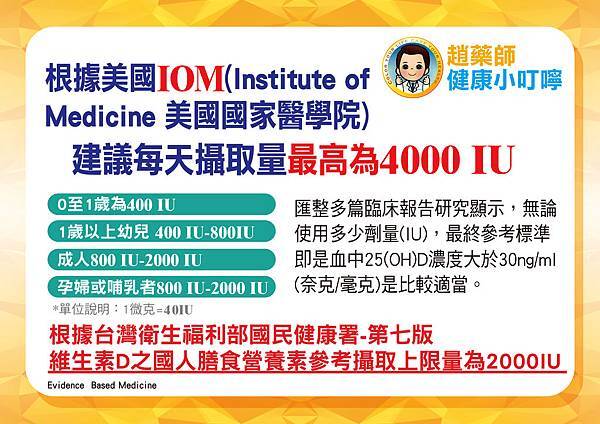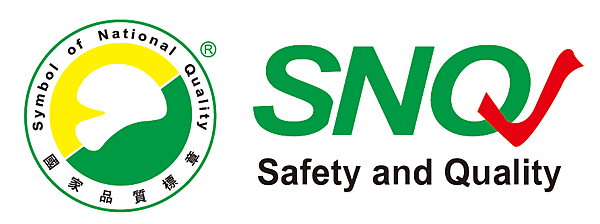
維生素D缺乏症的人可能更容易受到冠狀病毒的感染
您可能已經聽說過維生素D在冠狀病毒患者中的重要作用-但是在病毒的早期階段我們真的了解多少?
什麼是維生素D?
維生素D通常被稱為“陽光維生素”,實際上是可以在人體內製造的維生素和激素。1維生素D調節人體中其他重要礦物質(例如鈣和磷酸鹽)的含量,它們都是健康所必需的骨骼,牙齒和肌肉。
維生素D和飲食
維生素D有兩種主要形式,分別是維生素D3(膽鈣化醇)和維生素D2(麥角鈣化醇)。維生素D的主要來源是日光照射(在皮膚中合成),以及食物或膳食補充劑。在4月至9月的幾個月中,皮膚合成是大多數人維生素D的主要來源。在某些食品中維生素D的含量不高。
–鮭魚,沙丁魚和沙丁魚等含油魚含有適量。
- 紅肉
–蛋黃,肉和內臟的含量適中,但在整個季節可能有所不同。
維生素D和冠狀病毒
我們知道,糖尿病患者的感染風險較高,尤其是肺炎和流行性感冒,肥胖者(體重指數(BMI)大於40kg / m2)以及70歲以上的人應該盡可能地遮蔽並留在家裡最近的一項研究得出結論,在COVID-19時期,對營養和蛋白質攝取對糖尿病患者很重要,而且維生素的缺乏也需要糾正。
英格蘭公共衛生指南指出以下人群存在維生素D缺乏症的風險,全年應服用10微克維生素D

養老院等機構中的人
外面總是遮住皮膚的人
皮膚很少或沒有陽光照射的人
更高劑量的維生素D?
由羅斯·安妮·肯尼(Rose Anne Kenny)教授領導的一項愛爾蘭最新研究發表在《愛爾蘭醫學雜誌》上,呼籲醫院,療養院或年長者立即補充較高的維生素D。
肯尼教授說:“儘管我們不特別了解維生素D在Covid-19感染中的作用,鑑於其對改善免疫反應的廣泛影響以及骨骼和肌肉健康的明確證據,但這些繭和其他高危人群應確保他們攝入了足夠的維生素D。”
來自美國的另一組研究人員建議在感染的最初幾週(每天10,000IU /天)服用非常高的維生素D,但是研究小組承認這項研究的局限性,並說在建議這些維生素D之前需要進一步的研究。普通民眾的補充水平很高。

最近的一項研究表明,缺乏維生素D的人可能更容易受到冠狀病毒的感染(特別是呼吸道感染),維生素D可以作為治療該病毒的治療選擇。重要的是要注意,這是一個非常早期的建議,是基於牛的研究,因此尚不能翻譯成人類。
應當指出,英國2016年維生素D報告的一個專家小組評估了證據,但沒有足夠有力的證據來支持推薦維生素D補充劑以降低呼吸道感染的風險。
我應該補充嗎?
如果您要遮擋陽光,不要受到陽光照射,政府建議您每天服用10毫克的非處方維生素D補充劑。如果您過去的維生素D含量非常低,則可能需要更高的劑量–請諮詢您的藥師或醫生。
至於專門用於預防或治療冠狀病毒的較高劑量的維生素D,迄今為止的證據非常有限,尚無法提出較高劑量的建議。如果不確定或想服用更大劑量,則應與醫生或藥師討論。

閱讀更多有關克服COVID-19的信息:
研究人員認為DDP4抑製劑可以幫助對抗COVID-19
從1型糖尿病的冠狀病毒中恢復
從冠狀病毒中恢復的詳細說明
英國最年長的COVID-19倖存者向醫院工作人員致敬
患有1型糖尿病和肺部疾病的年輕老師征服了COVID-19
You may have heard of the important role of vitamin D in people who have Coronavirus – but how much do we really know at the early stage of the virus?
WHAT IS VITAMIN D?
Often known as ‘the sunshine vitamin’, vitamin D is actually a vitamin and a hormone, which can be made in the body.1 Vitamin D regulates the amount of other important minerals in our body such as calcium and phosphate, both needed for healthy bones, teeth and muscles.
VITAMIN D & DIET
There are two major forms of vitamin D which are vitamin D3 (cholecalciferol) and vitamin D2 (ergocalciferol). The main sources of vitamin D are sunlight exposure (where it is synthesised in the skin) and foods or dietary supplements. Between the months of April and September, skin synthesis is the main source of vitamin D for most people.2 Vitamin D is found in modest amounts in some foods;
– Oily fish such a salmon, sardines and pilchards contain reasonable amounts.
– Red meat
– Egg yolks, meat and offal contain modest amounts but this can vary throughout the seasons.
VITAMIN D AND CORONAVIRUS
We know that individuals with diabetes are at higher risk of infections, especially pneumonia and influenza and that people living with obesity (who have a body mass index (BMI) of greater than 40kg/m2) as well as those 70 years old and above should be shielding and staying home as much as possible.2
A recent study concluded that attention to nutrition and protein intake is important for individuals with diabetes in times of COVID-19 and also that deficiencies of vitamins need to be corrected.3
Public health England guidelines state that the following groups are at risk of vitamin D deficiency and should take a 10 microgram supplement of vitamin D all year around:3
- People in institutions such as care homes
- People who always cover their skin when outside
- People whose skin has little or no exposure to the sun
HIGHER DOSE VITAMIN D?
A recent Irish study led by Professor Rose Anne Kenny published in the Irish Medical Journal called for immediate higher vitamin D supplementation for those in hospital, in nursing homes or those who are older.4
Prof Kenny said: “Though we do not know specifically of the role of vitamin D in Covid-19 infections, given its wider implications for improving immune responses and clear evidence for bone and muscle health, those cocooning and other at-risk cohorts should ensure they have an adequate intake of vitamin D.”
Another group of researchers from the US have recommended a very high does of vitamin D for the first few weeks of infection (10,000IU/day), however, the team acknowledge the limitations of the study and say that further research is required before suggesting these very high supplementation levels for the general public.5
One more recent study had suggested that those with vitamin D deficiency may be more prone to infection (specifically respiratory infections) from the Coronavirus and that vitamin D could work as a therapeutic option for treatment of the virus. It is important to note this is a very early recommendation and based on bovine studies, therefore cannot be translated to humans yet.6
It should be noted that an expert panel in the UK 2016 Vitamin D report evaluated the evidence and did not find strong enough evidence to support recommending vitamin D supplements to reduce the risk of respiratory tract infections.
SHOULD I SUPPLEMENT?
If you are shielding and not getting sunlight, the government recommendation is that you should take an over the counter vitamin D supplement of 10 micrograms every day. If you have had very low vitamin D in the past, you may need a higher dose – speak to your pharmacist or doctor for advice on this.
As for the higher doses of vitamin D specifically to prevent or treat Coronavirus, the evidence so far is very limited and higher dose recommendations cannot be made yet. If you are unsure or want to take a higher dose then you should discuss this with your doctor or pharmacist.
Read more on overcoming COVID-19:
- Researcher thinks DDP4 inhibitors could help battle COVID-19
- Recovering from coronavirus with type 1 diabetes
- A detailed account of recovering from coronavirus
- UK’s oldest COVID-19 survivor pays tribute to hospital staff
- Young teacher with type 1 diabetes and lung condition conquers COVID-19

References
[1] British Nutrition Foundation (2016). Vitamins.
[2] SACN. (2016). Vitamin D and Health.
[3] Gupta, Ritesh et al. “Clinical considerations for patients with diabetes in times of COVID-19 epidemic.” Diabetes & metabolic syndrome, vol. 14,3 211-212. 10 Mar. 2020, doi:10.1016/j.dsx.2020.03.002
[4] Vitamin D deficiency in Ireland – implications for COVID-19. Results from the Irish Longitudinal Study on Ageing (TILDA)
[5] Grant, W.B.; Lahore, H.; McDonnell, S.L.; Baggerly, C.A.; French, C.B.; Aliano, J.L.; Bhattoa, H.P. Evidence that Vitamin D Supplementation Could Reduce Risk of Influenza and COVID-19 Infections and Deaths. Nutrients 2020, 12, 988.
[6] Zhang, L, Liu, Y. Potential interventions for novel coronavirus in China: A systematic review. J Med Virol. 2020; 92: 479– 490
資料來源 https://www.diabetes.co.uk/diet/vitamin-d-and-coronavirus






 留言列表
留言列表